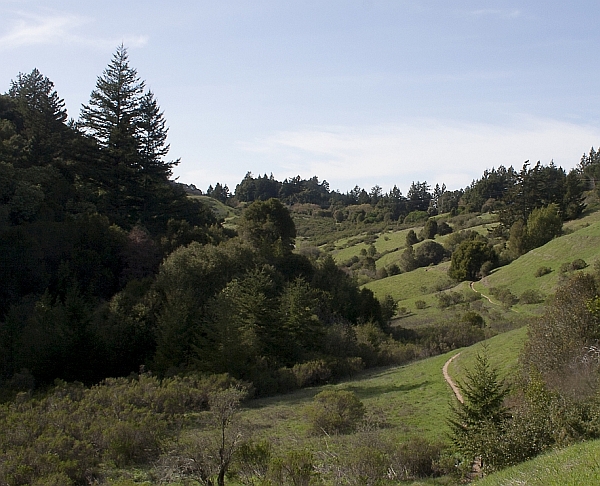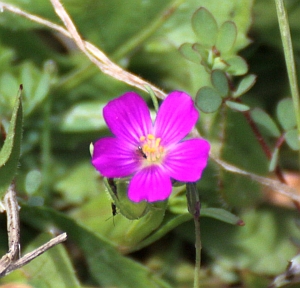It was a nice sunny afternoon in early April and Long Ridge Open Space Preserve looked quite inviting. As expected, the wildflowers were putting on a great show. We started with Peters Creek Trail. The view was wonderful, as you looked northwest along the trail.
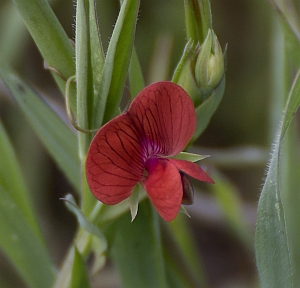
Red Pea – Lathyrus cicera
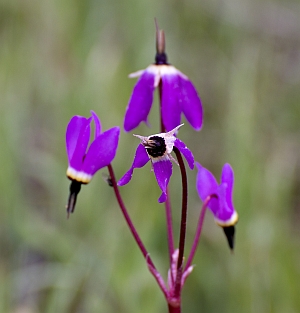
Henderson’s Shooting Star
In the first stretch from the parking lot, we saw these 4 different wildflowers. Henderson’s Shooting Star is native to Western America and is sometimes called Mosquito Bill for obvious reasons. The Red Pea (Lathyrus cicera) is a non-native, introduced from Europe. It is indeed a type of legume or pea. A bit of searching on the net seems to indicate that Long Ridge may well be the only place in the Bay Area that it is seen in! Incidentally, I also learnt that it contains a neurotoxin which can cause paralysis of the lower body. Next in line were the two maids – Fringed Redmaid (Calandrinia ciliata) and Milkmaid (Cardamine californica).

Milkmaid
There were more wildflowers as we continued down the trail. Purple Sanicle belongs to the parsley family. The Woodland Strawberry (Fragaria vesca) is closely related to the familiar fruit (Fragaria ananassa) that we eat at home. Wikipedia says that “Evidence from archaeological excavations suggests that Fragaria vesca has been consumed by humans since the Stone Age. ” The French Broom is a non-native that is a highly invasive nuisance plant in much of the Bay area. Many volunteers are spending many laborious hours to remove it and alleviate its negative effect on natural areas. I did not know its name or anything about it on the hike, so I was able to enjoy the pretty flowers without any mixed feelings.

Purple Sanicle, Woodland Strawberry, French Broom
Further along we encountered a butterfly – not nearly as colorful – but providing a nice change of pace from all the flora. It was the Propertius Duskywing, named after a Roman poet of the first century B.C. The intricate pattern and the many subtle shades of brown/gray help make it quite attractive despite the lack of color. We must have seen 4 or 5 these butterflies. It is the commonest duskywing in the Bay area. The similar Mournful Duskywing has a broad white trailing edge to the rear wings.
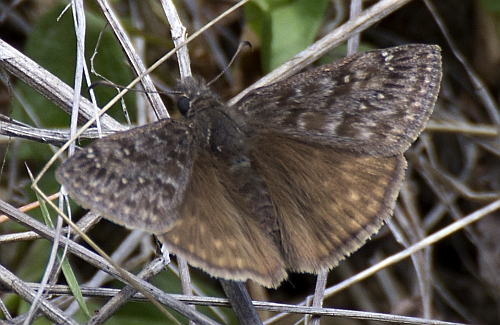
The trail crossed a little stream and of course we peered down hopefully from the bridge. After a bit of searching we were rewarded with the sight of California Newts swimming in the water. They always remind me of swimming crocodiles as they swim underwater with their legs tucked into their sides and their tail propelling them along with sinuous sweeps. The pooled water in the streambed was in a forested area and the low light made photography a bit challenging.

Once in a while we carefully turned over logs with great expectations. Usually there is nothing but occasionally we encounter interesting creatures. Always remember to gently return the log to its original position. Under one such log we found a California Slender Salamander. This salamander is part of a family called Lungless Salamanders. They lay their eggs on land in a moist place and hatch directly into a tiny salamander with the same shape as an adult. They do not go through the aquatic larva phase.
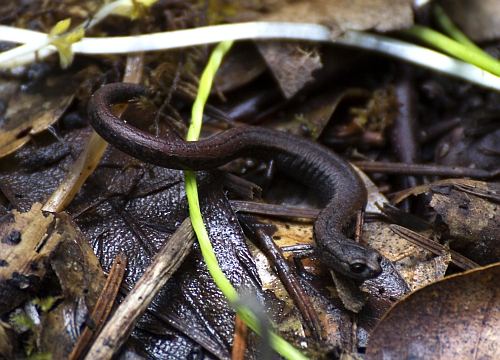
Just off the trail was an iconic invertebrate of the Bay area, the California Banana Slug (Ariolimax californicus). It evokes reactions ranging from “Ugh!” to “Wow!” but usually at one extreme or the other. Few people can look at it without generating a strong response. This one seemed to be enjoying a light snack.
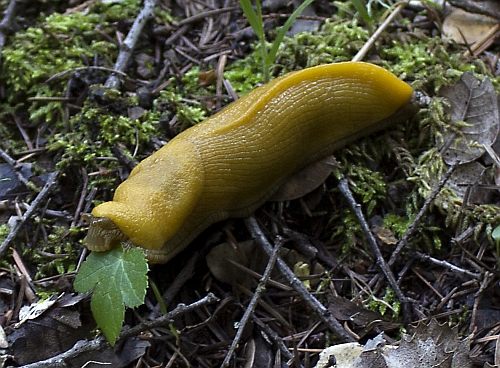
A nice sight further down the trail was a stand of Manzanita in full bloom. Usually you get to admire the beautiful red bark of this tree. This being spring and the right time, the lovely white flowers were adding to the charm. In trying to identify the species, I learnt to my dismay, that there are many species of Manzanita and I will have to make more careful notes in the field if I hope to identify them.
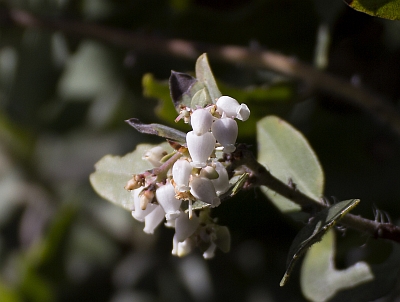
Other species we saw – Black-tailed Deer, Band-tailed Pigeon, Chestnut-backed Chickadee, Western Fence Lizard. For more information about the wildlife of the Bay area visit sfbaywildlife.info.
